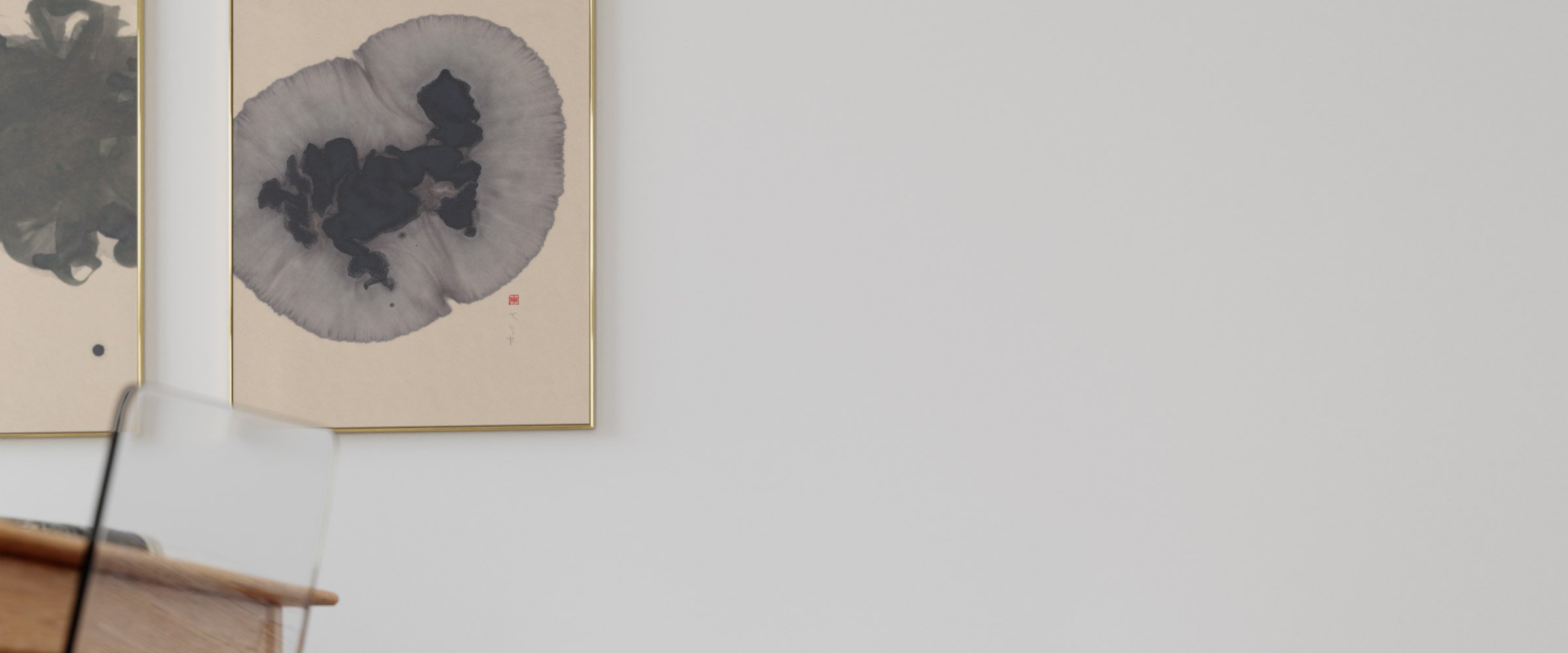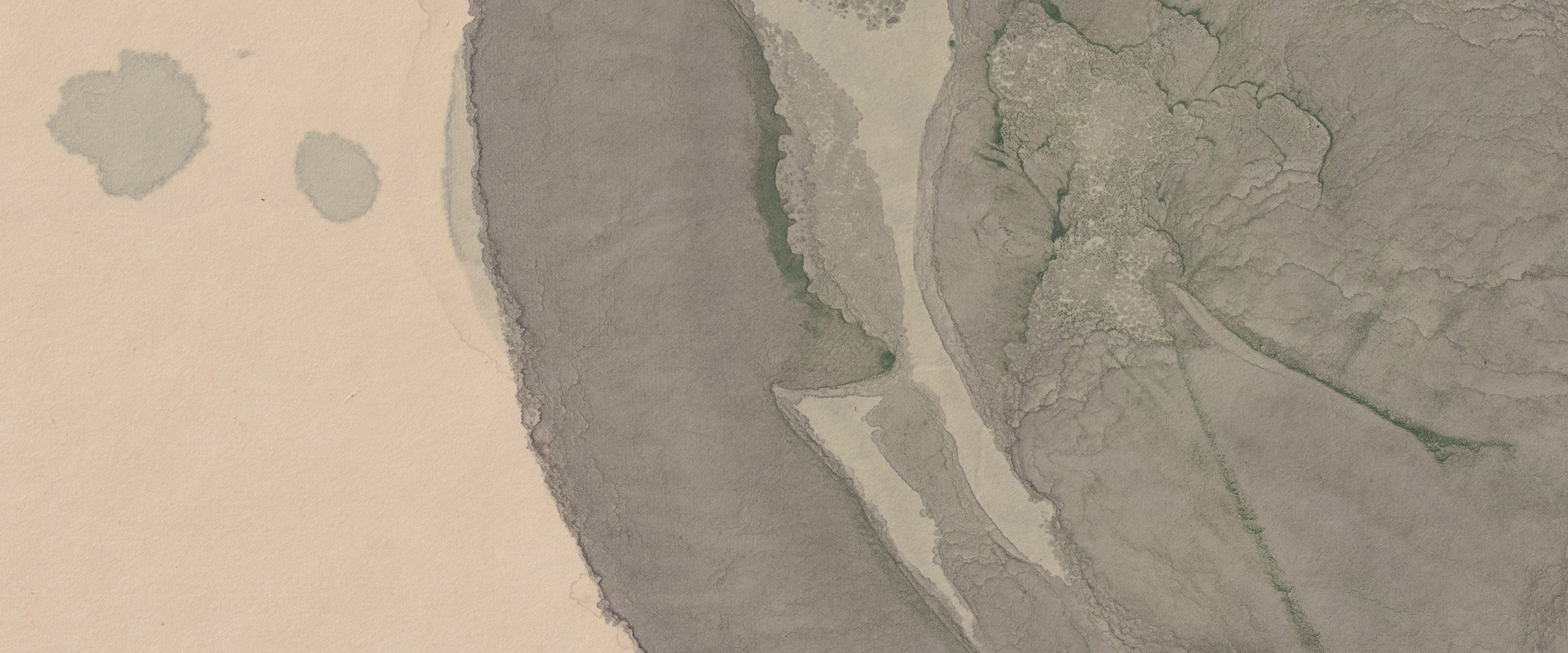

>
It’s not what you look at that matters, it’s what you see.
— Henry David Thoreau –
<
—
color field paintings:
CONTEMPLATIONS
For many years, Thoth’s art focused on photorealistic portraits painted with acrylics. He would spend weeks on a single painting, using tiny brushes, constantly adding and refining details to achieve a level of ‘perfection’ — if such a thing were possible.
As an artist steeped in Western traditions and techniques, he was accustomed to retouching, overpainting, and erasing in pursuit of the final, desired piece of art.
This approach is not possible when working with Sumi ink on Washi paper. Every ‘mistake’ is visible, forcing the artist to concentrate, think ahead, and embrace reduction. The result is always a reflection of Wabi-Sabi¹ — the appreciation of natural imperfection. Encountering the Asian Sumi-e² technique was both a significant challenge and a profound liberation for Thoth.
The act of ink painting is akin to a meditative process — a constant dialogue between the artist, his thoughts, and the behavior of the ink on the paper.
In this collection, Thoth explores the contemplative and puristic aspects of this technique, celebrating the beauty of simplicity. He focuses on ‘silent fields’; flat, abstract forms — whether brushed, drawn, poured, or dipped — reduced compositions, and subtle colors, using only different washes of Japanese Sumi³ ink and mineral pigments.
This approach is not only connected to Zen⁴ and Japanese aesthetic principles like Wabi-Sabi and Shibui⁵ but also to the tradition of Color Field Painting, a mid-century art movement closely linked to Abstract Expressionism.
>
Selected artworks from this series:
Contemplation N°55, N°56 + N°57
Contemplation N°24
Contemplation N°26
Contemplation N°60
Contemplation N°39
Sediment | Study N°9
Blue(s)
Contemplation N°30
Contemplation N°20
Four Cypresses In A Zeppelin | Study N°1
+ Medulla | Study N°2
Contemplation N°67
Contemplation N°46 + N°47
O
See available Contemplations:
¬
Glossary of related terms:
¹
Wabi-Sabi (侘寂) : A Japanese aesthetic concept that appreciates the beauty of imperfection, transience, and simplicity, finding value in the natural, aged, and weathered aspects of objects and experiences.
²
Sumi-e (墨絵) : The Japanese term for East Asian brush painting, also known as ‘ink and wash’, which uses black ink (Sumi) in varying concentrations on rice paper or Japanese Washi. The word e means ‘image’.
³
Sumi (墨): The Japanese term for black ink, made primarily from the soot of burnt lamp oil or pinewood, mixed with animal glue and perfume.
⁴
Zen (鉓) : A school of Mahayana Buddhism strongly influenced by Taoism. The word originates from Sanskrit and translates as ‘absorption’ or ‘meditative state’.
⁵
Shibui (渋い) : A Japanese term referring to a particular aesthetic of simple, subtle, and unobtrusive beauty. The seven elements of shibusa are simplicity, implicity, modesty, naturalness, everydayness, imperfection, and silence.
I

